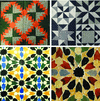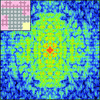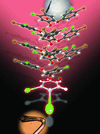issue contents
January 2014 issue

editorial
GENERAL
IUCrJ is a fully open-access journal that aims to publish high-quality structural science papers. It has been launched for the International Year of Crystallography (IYCr2014).
scientific commentaries
PHYSICS | FELS
For tiny crystals, their diffraction intensities at and between the Bragg peaks become measurable due to the limited number of the unit cells, which can in principle be used to directly phase the crystal structures.
CHEMISTRY | CRYSTENG
Cl/Br/I alternative substitutions in a series of dihalophenols indicate that type I and type II halogen···halogen contacts have different chemical nature. Only the latter ones qualify as true halogen bonds, according to the recent IUPAC definition.
research papers
CHEMISTRY | CRYSTENG
Download citation


Download citation


The role of the supramolecular synthon as the operational structural unit in the late stages of the crystallization event is highlighted with reference to polymorphs and pseudopolymorphs in the orcinol–bipyridine cocrystal system.
PHYSICS | FELS
The shape transforms of nanocrystals with incomplete unit cells are studied using computer simulations. Structure-factor phases can be retrieved from the molecular transforms after removing the modulating shape transform terms.
BIOLOGY | MEDICINE
The structure of WcbI, a protein essential to the virulence of B. pseudomallei, reveals that this protein has a novel fold. WcbI binds strongly to coenzyme A, but appears to require an unidentified partner protein for its putative acetyltransferase function.
MATERIALS | COMPUTATION
A general approach to the analysis of structural continuity in twins is presented and applied to the known twins in melilite.
CHEMISTRY | CRYSTENG
Download citation


Download citation


The preference of Br to form type II contacts over type I is explored by various techniques. The mechanical properties of some dihalogenated phenols are correlated with their structures.
CHEMISTRY | CRYSTENG
Download citation


Download citation


13 new phases of the inositols, 1,2,3,4,5,6-hexahydroxycyclohexane, were found. Crystal structure determinations and thermal analyses reveal a very complex picture of phases, rotator phases and phase transitions.
BIOLOGY | MEDICINE
The presentation of non-covalent interactions in protein X-ray crystal structures needs to routinely include their atomic precision, as detailed here; a user knowledge base for these precisions with examples is also offered. Cases are also indicated where the need for such a description of precision is a natural extension, such as those involving metalloproteins and the protonation states of ionisable amino acids. This study is also relevant to protein three-dimensional structure molecular-graphics software.



 journal menu
journal menu




 access
access





















